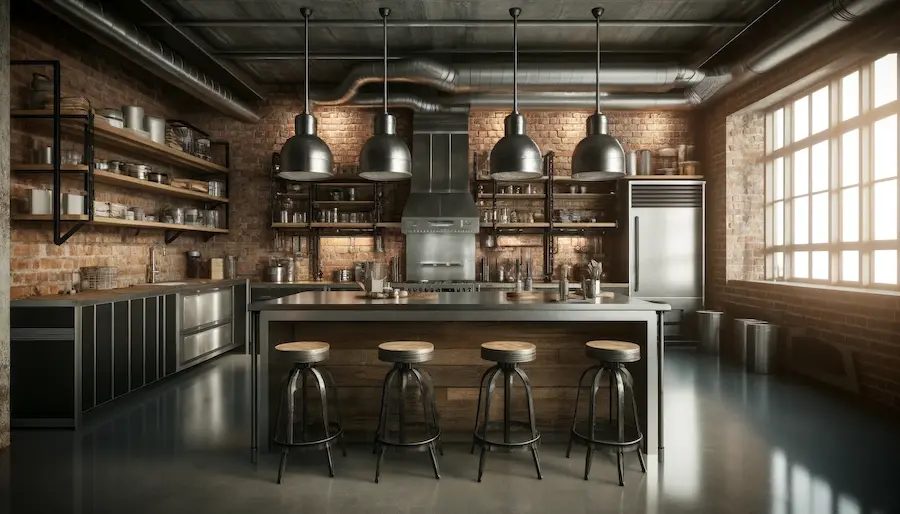An industrial kitchen design draws inspiration from the raw, utilitarian aesthetics of factories and commercial spaces, emphasizing functionality, durability, and a minimalist approach. This article explores the history, key features, applications, and considerations for incorporating an industrial style into your kitchen.
History and Origins of Industrial Kitchens
The industrial design style originated during the late 18th century Industrial Revolution, a period marked by economic growth and technological advancements. Factories and warehouses were constructed with a focus on functionality and efficiency, utilizing materials like steel, iron, and concrete. In the 1970s, abandoned industrial buildings were repurposed into residential spaces, leading to the incorporation of industrial elements into home design. This trend has since evolved, influencing modern kitchen designs that embrace the raw and utilitarian aspects of industrial architecture.
Key Features of Industrial Kitchens
- Open Layouts: Industrial kitchens often feature spacious, open floor plans that facilitate easy movement and interaction.
- Exposed Structural Elements: Visible beams, pipes, and ductwork contribute to the industrial aesthetic, adding a sense of authenticity and character.
- Raw Materials: The use of materials such as stainless steel, concrete, brick, and reclaimed wood provides a rugged and durable appearance.
- Neutral Color Palette: Shades of gray, black, white, and earthy tones dominate industrial kitchens, creating a cohesive and understated look.
- Functional Lighting: Industrial-style lighting fixtures, such as pendant lights with metal finishes, enhance both functionality and design.
Applications of Industrial Kitchens
- Residential Spaces: Homeowners incorporate industrial elements to create kitchens that are both practical and aesthetically pleasing.
- Loft Apartments: Industrial kitchens complement the open spaces and high ceilings typical of loft-style living.
- Commercial Environments: Restaurants and cafes may adopt industrial kitchen designs to convey a modern, edgy atmosphere.
Considerations When Designing an Industrial Kitchen
- Material Selection: Choose durable materials that can withstand heavy use while maintaining the industrial aesthetic.
- Balance and Warmth: Incorporate elements like wood accents or textiles to soften the space and prevent it from feeling too cold or sterile.
- Lighting: Ensure adequate lighting to highlight key features and maintain functionality, considering both natural and artificial sources.
- Personalization: Add personal touches, such as artwork or unique fixtures, to make the space feel inviting and reflective of your style.
Conclusion
Industrial kitchen design offers a unique blend of functionality and style, drawing inspiration from historical industrial spaces to create modern, efficient kitchens. By understanding the key features and considerations of this design approach, you can create a kitchen that is both practical and visually engaging, suited to contemporary living.
